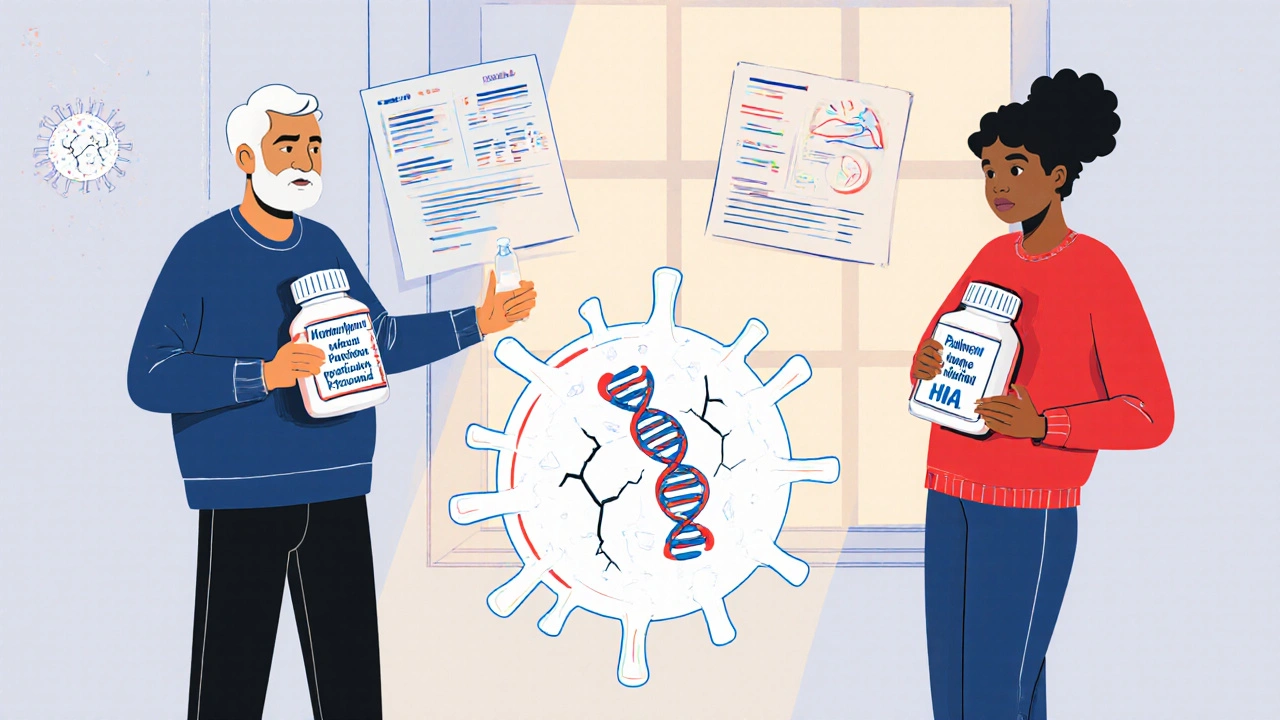Paxlovid: What It Is, How It Works, and What You Need to Know
When you hear Paxlovid, a prescription antiviral combo used to treat mild-to-moderate COVID-19 in high-risk adults. Also known as nirmatrelvir/ritonavir, it’s one of the few oral treatments that can stop the virus from spreading inside your body early on. It’s not a vaccine. It’s not a cure. But for people over 65, or those with diabetes, heart disease, or weakened immune systems, taking it within five days of symptoms can cut your risk of hospitalization by nearly 90%.
What’s inside Paxlovid? Two drugs: nirmatrelvir, a new antiviral that blocks the virus from copying itself, and ritonavir, an older HIV drug that slows down how fast your body breaks down nirmatrelvir. Together, they keep the antiviral active long enough to do its job. You take three pills twice a day for five days. No refills. No extensions. Timing matters—start as soon as you test positive.
But Paxlovid isn’t for everyone. If you’re on certain heart meds, blood thinners, or cholesterol drugs, it can cause dangerous interactions. Your doctor needs to check your full list of medicines before prescribing it. Some people get a weird metallic taste, diarrhea, or muscle aches. Most side effects fade fast. And while some worry about rebound symptoms—where you feel better, then get sick again—it’s not clear if Paxlovid causes it or if it’s just how the virus behaves in some people.
There are alternatives. Molnupiravir is another oral option, but it’s less effective and not for pregnant people. Remdesivir works too, but you need an IV infusion at a clinic. For most, Paxlovid remains the top choice if you’re eligible. It’s not cheap, but generic versions are starting to appear in some countries, making it more accessible.
Below, you’ll find real-world stories and science-backed guides on how Paxlovid fits into broader treatment plans, what to expect when you take it, how it compares to other antivirals, and what to do if your doctor won’t prescribe it. You’ll also see how it interacts with other meds you might be taking—like blood pressure pills or diabetes drugs—and what to watch for after finishing the course. This isn’t theoretical. These are the questions real patients and doctors are asking right now.
Molnupiravir vs. Other COVID-19 Antivirals: What Works Best in 2025
- Robin Tudge
- November 18, 2025
- 3 Comments
In 2025, Paxlovid is the most effective oral treatment for high-risk COVID-19 patients, but Molnupiravir remains a practical alternative when drug interactions make Paxlovid unsafe. Remdesivir is used for hospitalized patients. Know your options before you need them.
read more
